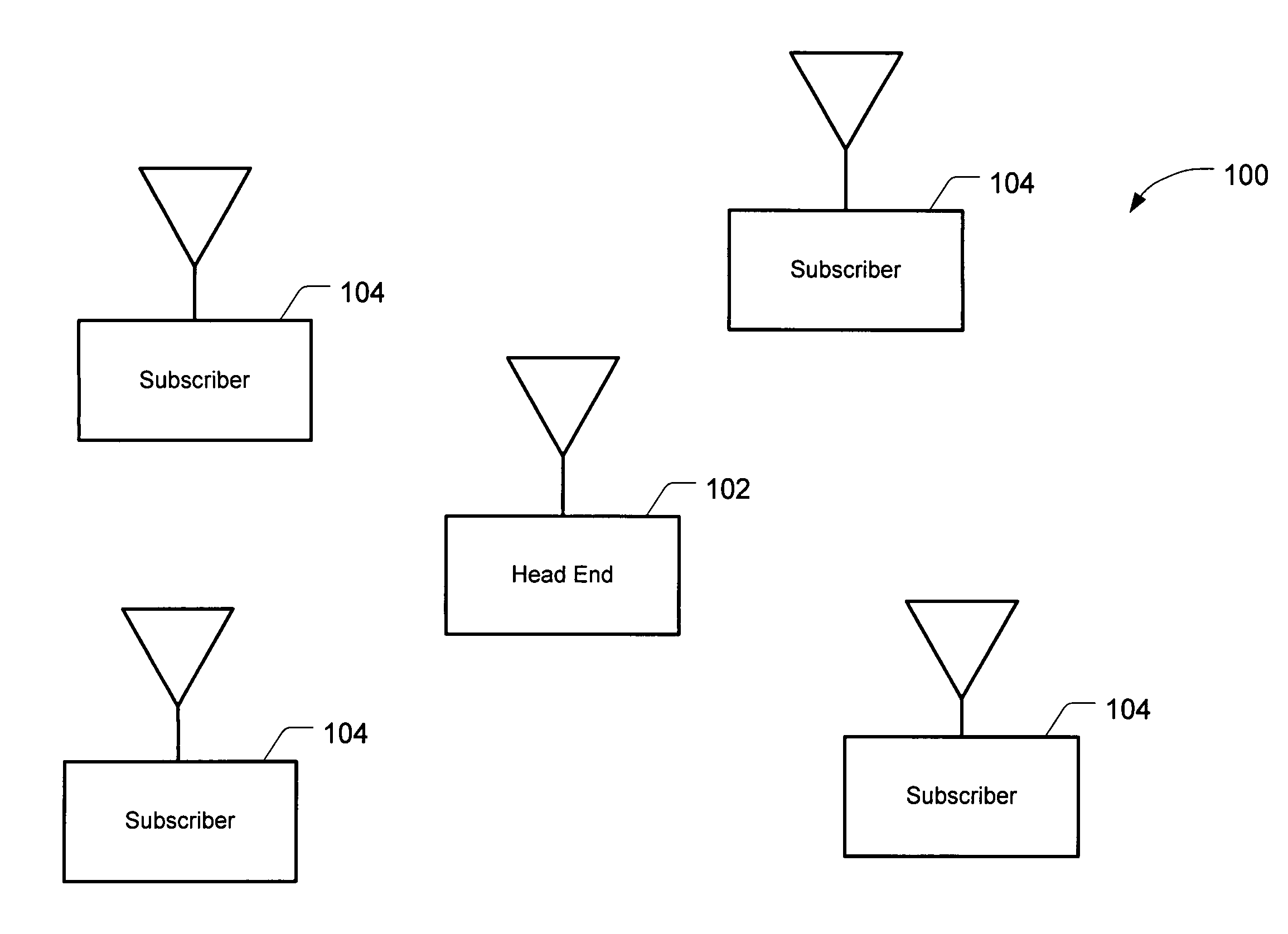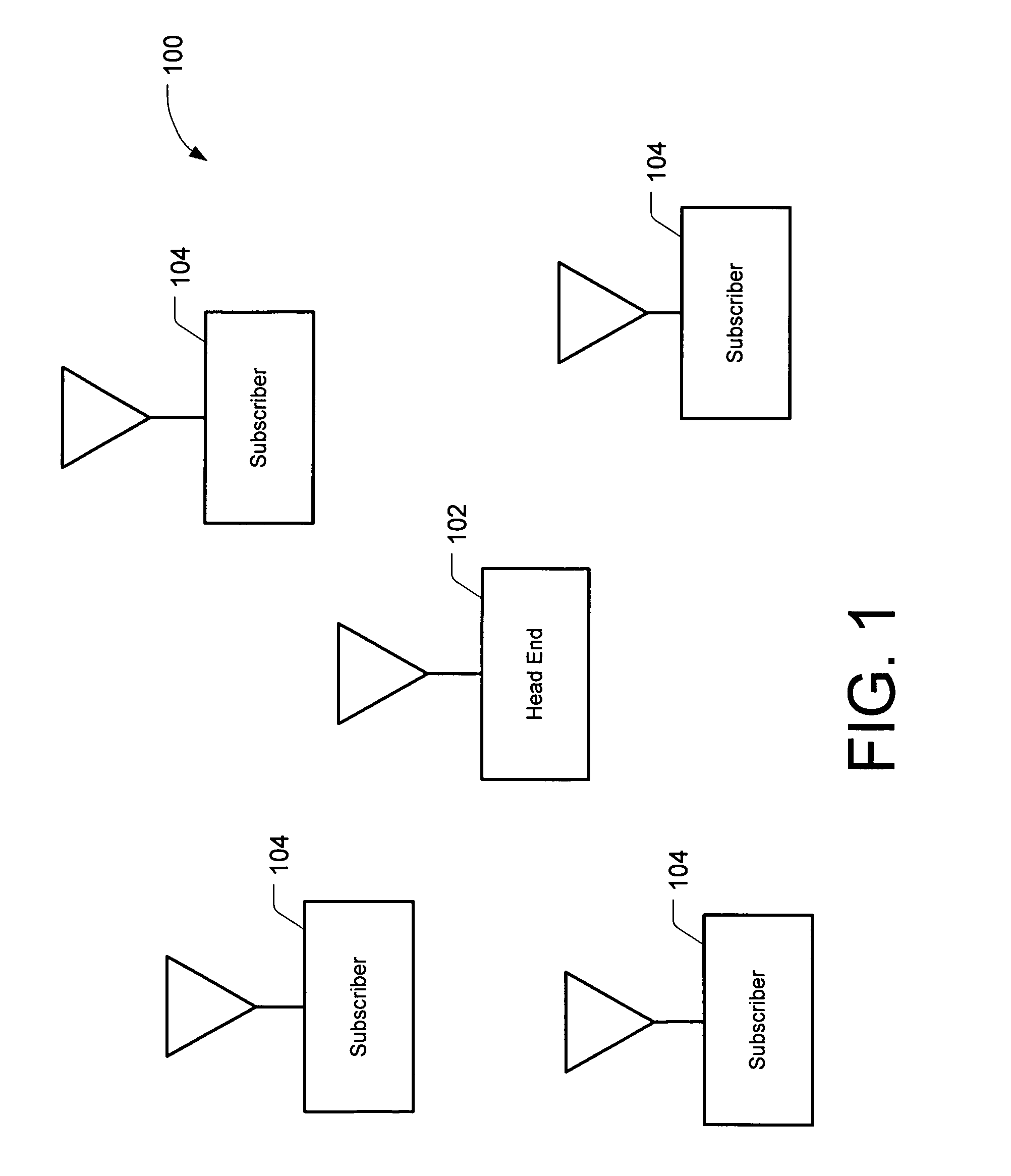Interference mitigation in a wireless communication system
a wireless communication system and interference mitigation technology, applied in the field of communication systems, can solve the problems of interference from other transmissions in the utilized spectrum, affecting the success of data communication, and unlicensed internet access transmissions being subject to interference from other transmissions
- Summary
- Abstract
- Description
- Claims
- Application Information
AI Technical Summary
Benefits of technology
Problems solved by technology
Method used
Image
Examples
Embodiment Construction
[0025]FIG. 1 depicts a point to multipoint wireless communication network 100 suitable for implementing one embodiment of the present invention. The present invention is, however, not limited to wireless networks. Network 100 includes a central access point or head end 102 and multiple subscriber units 104. All communication is typically either to or from central access point 102. Communication from central access point 102 to one or more of subscriber units 104 is herein referred to as downstream communication. Communication from any one of subscriber units 104 to central access point 102 is herein referred to as upstream communication. In one embodiment, different frequencies are allocated to upstream and downstream communication. This is referred to as frequency division duplexing (FDD). Alternatively, time division duplexing (TDD) may be employed where upstream and downstream communications share the same frequencies. Although the point to multipoint network is used to describe ...
PUM
 Login to View More
Login to View More Abstract
Description
Claims
Application Information
 Login to View More
Login to View More - R&D
- Intellectual Property
- Life Sciences
- Materials
- Tech Scout
- Unparalleled Data Quality
- Higher Quality Content
- 60% Fewer Hallucinations
Browse by: Latest US Patents, China's latest patents, Technical Efficacy Thesaurus, Application Domain, Technology Topic, Popular Technical Reports.
© 2025 PatSnap. All rights reserved.Legal|Privacy policy|Modern Slavery Act Transparency Statement|Sitemap|About US| Contact US: help@patsnap.com



